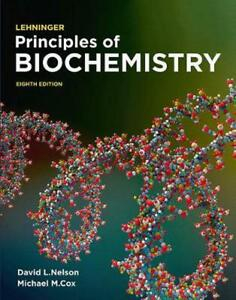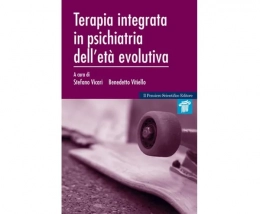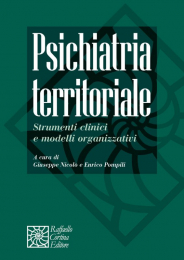Non ci sono recensioni
Available for the first time in Achieve, the definitive reference text for biochemistry Lehninger Principles of Biochemistry, 8e helps students focus on the most important aspects of biochemistry-- the principles! Dave Nelson, Michael Cox, and new co-author Aaron Hoskins identify the most important principles of biochemistry and direct student attention to these with icons and resources targeted to each principle.
The 8th edition has been fully updated for focus, approachability, and up-to-date content. New and updated end-of-chapter questions -all available in the Achieve problem library with error-specific feedback and thorough solutions. These questions went through a rigorous development process to ensure they were robust, engaging and accurate.
Lehninger Principles of Biochemistry, 8e continues to help students navigate the complex discipline of biochemistry with a clear and coherent presentation. Renowned authors David Nelson, Michael Cox, and new co-author Aaron Hoskins have focused this eighth edition around the fundamental principles to help students understand and navigate the most important aspects of biochemistry. Text features and digital resources in the new Achieve platform emphasize this focus on the principles, while coverage of recent discoveries and the most up-to-date research provide fascinating context for learning the dynamic discipline of biochemistry.
Achieve supports educators and students throughout the full range of instruction, including assets suitable for pre-class preparation, in-class active learning, and post-class study and assessment. The pairing of a powerful new platform with outstanding biochemistry content provides an unrivaled learning experience
Support in Achieve
Lehninger's Principles of Biochemistry is now available in the Achieve platform. Achieve supports educators and students throughout the full range of instruction, including assets suitable for pre-class preparation, in-class active learning, and post-class study and assessment. The pairing of a powerful new platform with outstanding biochemistry content provides an unrivaled learning experience.
Features of Achieve include:
- A design guided by learning science research. Co-designed through extensive collaboration and testing by both students and faculty including two levels of Institutional Review Board approval for every study of Achieve
- An interactive e-book with embedded multimedia and features for highlighting, note-taking and accessibility support
- A flexible suite of resources to support learning core concepts, visualization, problem-solving, and assessment.
- A detailed gradebook with insights for just-in-time teaching and reporting on student and full class achievement by learning objective.
- Easy integration and gradebook sync with iClicker classroom engagement solutions.
Simple integration with your campus LMS and availability through Inclusive Access programs.
New Media Features
The Lehninger 8e digital program builds on the focus on principles, with resources ideal for in-person lecture-based to fully online courses.
Additional Media Features in Achieve:
- Interactive Metabolic Map allows students to navigate and zoom between overviews and detailed views of the most commonly taught metabolic pathways. Embedded Tours take students through the pathways step-by-step, helping them to both visualize concepts in isolation and understand how concepts are connected. By examining the pathways in this way, students are better equipped to understand the meaning of those connections. Assessment questions help students solidify their understanding and provide more structure to their learning. *Metabolic Pathways include: glycolysis, gluconeogenesis, the citric acid cycle, oxidative phosphorylation, the pentose phosphate pathway, fatty acid synthesis, the urea cycle, and oxidation.
- LearningCurve Adaptive Quizzing motivates reading and keeps students on pace with study with a fun game-like activity to quiz retention and understanding of concepts.
- Case Studies introduce students to a biochemical mystery and allows them to determine what investigations will solve it. Accompanying assessments ensure that students have fully completed and understood the case study, showing that they have applied their knowledge of the concepts.
Topics include:- A Likely Story: Enzyme Inhibition
- An Unexplained Death: Carbohydrate Metabolism
- A Day at the Beach: Lipid Metabolism
- Runner's Experiment: Integration of Metabolism
- NEW! pH Peril: pH and Amino Acid Structure
- Profound Relevance: Hemoglobin Regulation (Bohr Effect)
- Observation Over Intuition: Thermodynamics of Protein Folding
- Animated Mechanisms designed to enhance lecture or student study and help with visualization
- Animated Techniques are short animations of laboraatory techniques. Designed to provide students with an overview of protocol, these animations give students a conceptual understanding of what is happening at the chemical level.
- Problem Solving Video with diagrams, graphs and narration these videos walk students through problems on difficult topics helping them understand the right approach to the solution.
HallmarkText Features
Chemical Logic:
- Chemical Logic discusses the common biochemical reaction types that underlie all metabolic reactions, helping students to connect organic chemistry with biochemistry.
- Chemical Logic Figures highlight the conversation of mechanisms and illustrate patterns that make learning pathways easier. (Provided for each of the central metabolic pathways)
Focus on Visualization:
- Clear Art includes molec
- All end-of-chapter questions are available as online assessments in Achieve with hints, targeted feedback, and detailed solutions.
- Skills You Need activities support students with review and practice of prerequisite skills and concepts from chemistry, biology, and math for each biochemistry chapter.
- Instructor Activity Guides give you everything you need to plan and implement activities including interactive media, Clicker questions, and pre- and post-class assessments.
- Interactive Molecular Figures allow students to view and interact with textbook illustrations of protein structures online in interactive 3-D models for a better understanding of their three-dimensional structures.
- Updated and expanded instructor resources and tools.




